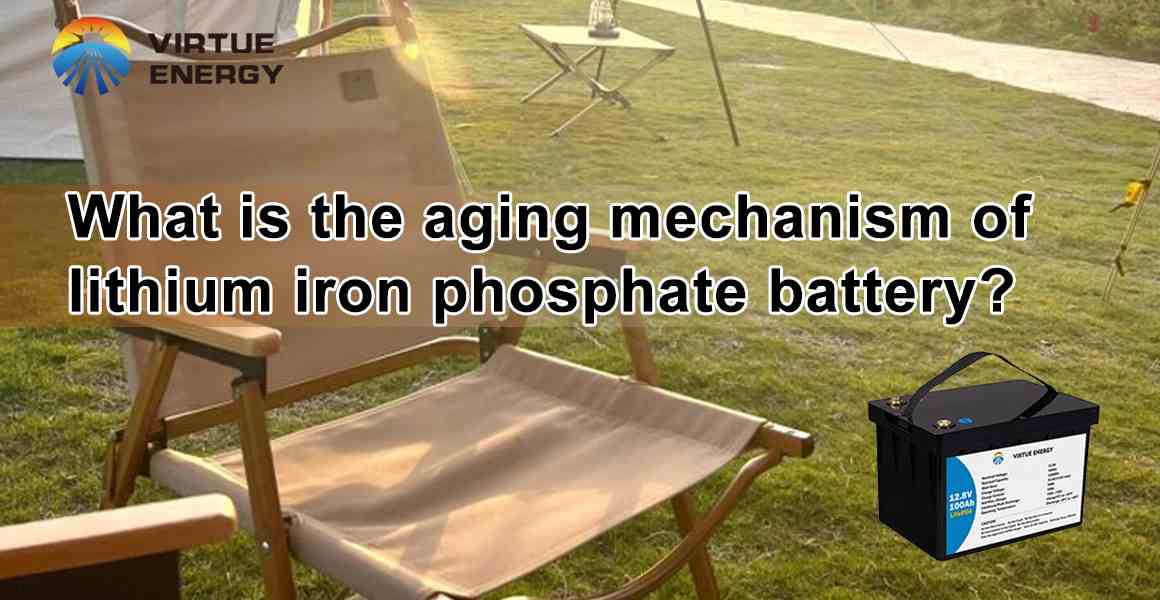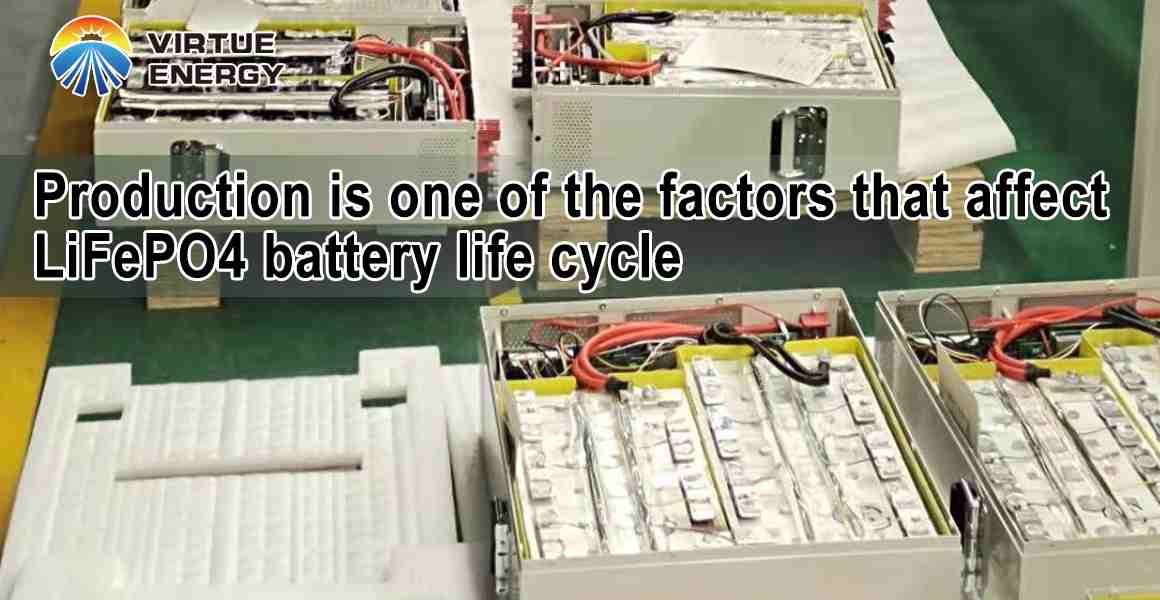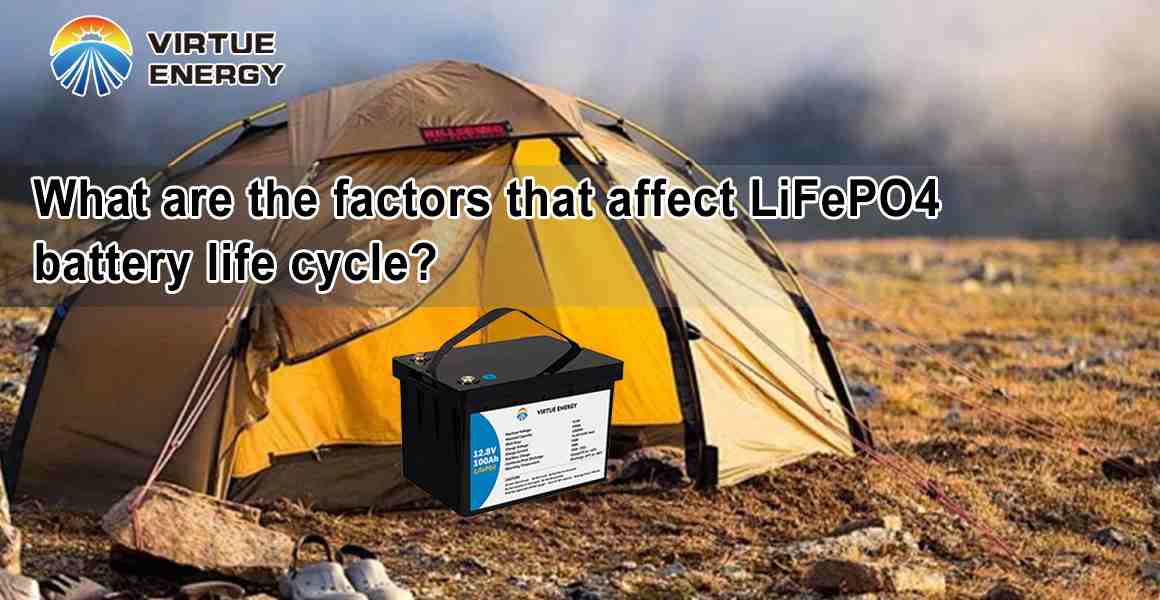With the development of LiFePO4 battery technology, it has been widely used in energy storage, new energy vehicles, data room backup power and other fields. For users who use LiFePO4 battery, LiFePO4 battery life cycle is related to the operation of the project as well as the revenue. A long battery life can help you to reduce the cost of battery replacement and get higher profit. In this article, we will focus on the factors affecting LiFePO4 battery life cycle to help users in various industries understand the factors that reduce battery life.
What is the aging mechanism of lithium iron phosphate battery?

The decay of lithium iron phosphate battery capacity involves a series of physical and chemical changes. The factors affecting the performance decay of LiFePO4 batteries mainly include operating time, temperature, charging state, current, and mechanical pressure. Among them, time mainly affects the growth of SEI membrane. High temperature affects the growth and decomposition of SEI film, electrolyte and binder decomposition, and low temperature will lead to the precipitation of lithium metal.
The high charge state leads to graphite stripping and lithium precipitation in addition to producing the same effects of high temperature. The low charge state affects the decomposition of the SEI film and the corrosion of the collector. The magnitude of the current density mainly affects the graphite stripping, the structure of the cathode material and the structure of the SEI membrane. Mechanical pressure mainly affects the structure of the material particles and the electrical contact performance between substances, and too much mechanical pressure can also trigger the risk of lithium precipitation.
In conclusion, the main reasons for the reduction of LiFePO4 battery life cycle are the loss of active lithium, the loss of positive and negative electrode materials and the increase of internal resistance. Negative electrode lithium precipitation and SEI film decomposition affect the loss of active lithium. The stripping of graphite, structural change of electrode material, disorder of anode material structure, rupture of electrode particles, dissolution of transition metal and corrosion of collector affect the performance of positive and negative electrodes.
What are the factors that affect LiFePO4 battery life cycle?
Design
The development of different performance batteries needs to match the corresponding material system and design formula. The main materials of LiFePO4 battery include cathode material, anode material, electrolyte and diaphragm. LiFePO4 battery lifespan strategy for the selection of the main materials requires that cathode materials with high structural stability be used, while anode materials with low coefficient of expansion and graphite with appropriate particle size are used, which can reduce the fragmentation of the particles and damage to the SEI membrane. The electrolyte is selected to contain film-forming additives and appropriate salt concentration to improve the stability of the SEI membrane. The diaphragm is coated with adhesive, which reduces the folds of the pole piece and improves the cycling performance.
Our 12V 100Ah LiFePO4 battery and other LiFePO4 battery design parameters that affect the life cycle mainly include slurry formulation, wafer surface density, wafer compaction, N/P ratio, group margin, and liquid injection volume. In order to ensure the LiFePO4 battery life cycle, we increase the amount of conductive agent and binder, and reduce the surface density of electrode coating. It can reduce wafer dropout during the cycle and shorten the lithium ion transport channel. Decreasing the compacted density of the electrode can increase the porosity of the electrode. Increasing the N/P ratio reduces the risk of lithium precipitation from the anode.
Production

Dust and moisture in the production environment will affect the self-discharge, life and safety performance of LiFePO4 battery. Excessive moisture in the environment will affect the stability of electrode and electrolyte, and also affect the stability of SEI film. Therefore, our factory will control the dew point of liquid injection process ≤-36℃, dust cleanliness ≤100,000 level. In addition, the production process will also affect the LiFePO4 battery life cycle. At present, most of the battery factories have introduced embossing process, positive pole pole piece embossing can reduce the pole piece wrinkles, reduce the negative electrode lithium precipitation and black spot in the cycle process, so as to improve the cycle performance of LiFePO4 battery.
Inconsistency of LFP batteries
The inconsistency mainly includes the differences in capacity, internal resistance, self-discharge rate, lifetime, state of charge (SOC) and operating voltage. It has been shown that the reasons for the inconsistency of batteries mainly include the differences in the manufacturing process and the inconsistency of the usage conditions, which interact with each other and gradually increase the inconsistency of the batteries in the practical applications.
Storage of LiFePO4 batteries and energy storage systems
Our 48v 100ah lithium battery is commonly used in home energy storage as well as commercial energy storage. The calendar life of the battery and energy storage system is strongly related to the storage time, SOC and temperature. The higher the battery storage temperature, the faster the capacity decay, 60℃ storage capacity decay is about 2.4 times of 25℃. The higher the battery storage SOC, the faster the capacity decay. The effect of temperature on LiFePO4 battery charge cycles is more prominent than that of SOC.
Operation of LFP batteries and energy storage systems
Battery and energy storage system life is related to its operation multiplication, temperature, SOC interval and pre-tensioning force. Smaller multiplier operation of LiFePO4 battery is favorable to improve the LiFePO4 battery life cycle, while temperature increases with the temperature of the storage system, the capacity of the battery decreases faster. With the increase of ambient temperature, the decrease of cathode material performance is an important cause of battery capacity degradation.
High SOC charging and discharging capacity decay is mainly due to the following two reasons. One is high SOC triggered lithium precipitation risk, the other is high SOC LiFePO4 material poor structural stability, resulting in the dissolution of Fe, Fe ions will exacerbate SEI decomposition, triggering capacity degradation. Pre-tensioning force energy storage system pre-tensioning force is too large or too small will reduce LiFePO4 battery life cycle. pre-tensioning force is small, the expansion of the battery cycle process will lead to poor interface contact of the pole piece, triggering lithium precipitation of the negative electrode. Too much preload affects the diffusion speed of lithium ions in the diaphragm and pole piece, leading to large lithium precipitation in the anode, which triggers rapid capacity degradation.
Conclusion
Whether in the design, manufacture or actual use of LiFePO4 battery, there are many factors affecting the cycle life. As a LiFePO4 battery manufacturer, we strictly follow the standard from the beginning of the battery material to provide users with long-life, high-quality LiFePO4 batteries to ensure that the business of users in various industries continue to operate normally. If you want to know more about our LiFePO4 battery products, please feel free to contact us by phone or e-mail.





